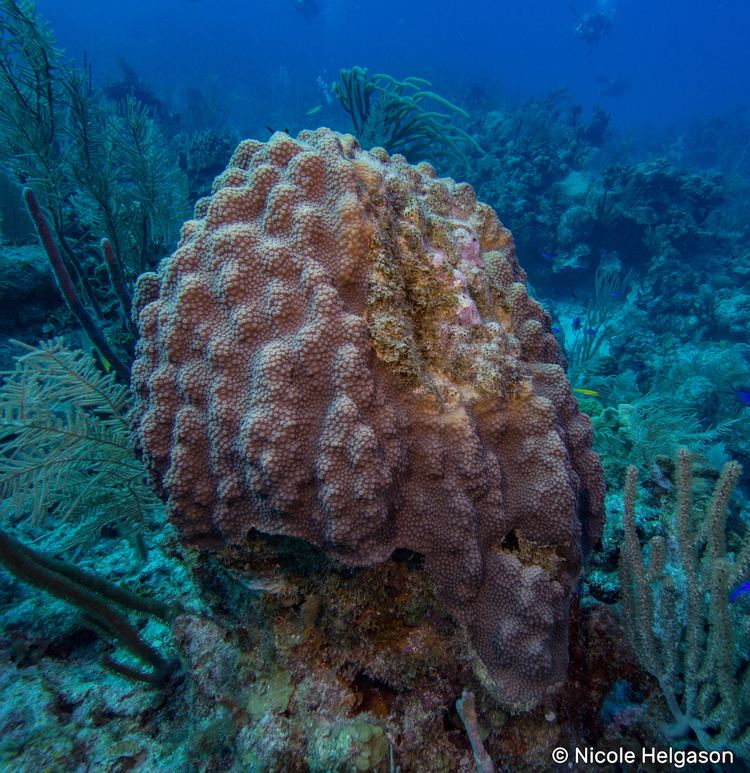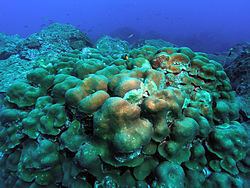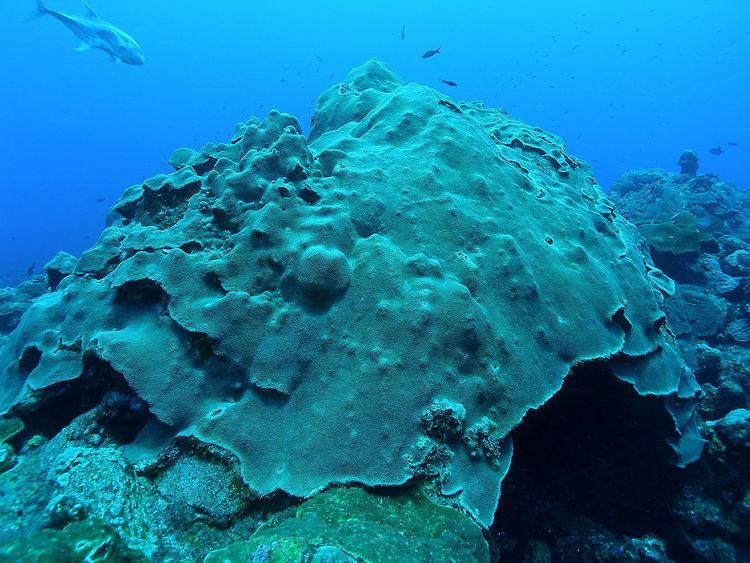Rank Genus | ||
 | ||
Similar Orbicella faveolata, Orbicella annularis, Montastraea, Scleractinia, Orbicella franksi | ||
Orbicella corals spawning
Orbicella is a genus of stony corals in the Merulinidae family. The Orbicella species complex comprises three sister species, namely Orbicella faveolata, Orbicella annularis and Orbicella franksi, all of which are shallow-water, zooxanthellate species and are native to the tropical western Atlantic Ocean, the Caribbean Sea and the Gulf of Mexico.
Contents
- Orbicella corals spawning
- Ponte orbicella annularis
- Characteristics
- Skeleton properties
- Speciation and reproductive barriers
- Species
- References

These corals are ubiquitous in the Caribbean. Their similar colony morphologies misled scientists to historically lump them into a single species, Montastraea annularis, which included three morphotypes “bumpy”, “columnar” and “massive”. These growth forms were believed to arise as a response to abiotic factors (e.g., depth, light availability). This taxonomic classification was challenged by further ecological, reproductive, genetic, and morphologic evidence, which led to the re-description of three separate species, Montastraea faveolata (massive), M. annularis (columnar) and M. franksi (bumpy).

A taxonomic revision published in 2012 established that the “Montastraea annularis species complex” formed a separate clade now in the genus Orbicella with three species names (O. faveolata, O. annularis, O. franksi). O. annularis and O. faveolata are commonly called the Boulder Star coral and the Mountainous Star coral, respectively.

Ponte orbicella annularis
Characteristics

The colonies of these corals are massive and form dome-shaped mounds, with uneven surfaces and bulging projections. The corallites are small and closely packed. These corals are mostly some shade of light brown but sometimes have green oral discs.
Skeleton properties

Orbicella skeleton is made from CaCO3 in the crystal form of aragonite. The growth rate has been correlated with depth. In addition, the skeleton also contains Brucite [Mg(OH)2] in the interseptal spaces (microbialites). These brucite particles encrusts microbes growing inside the coral skeleton.
Speciation and reproductive barriers
Speciation is the gradual process by which species originate. Speciation can be studied from many perspectives, but regardless of the point of view it often requires reproductive isolation between species. In the case of the Orbicella, these species are broadcast spawner corals and release gametes annually in the same evening into the water column. The night of spawning is normally within the warmest month of the year, and five to eight nights after the full moon. Some authors argue these species spawn simultaneously, but most reports support that the Orbicella species are temporally isolated by a few hours. Sperm and eggs are released packed in small bundles that break open when they reach the water surface due to the surface tension.Timing is important to improve the chances of gametes finding each other in the water column. In addition, gametes must be incompatible between species to prevent the formation of hybrid zygotes. Hybridization studies reported some success in crossing O. annularis and O. franksi. Yet crosses with O. faveolata are consistently unsuccessful. However, these crosses were done in laboratory conditions that are not natural (covering O. annularis in advance to trick it into spawning earlier) so these crosses are unlikely to occur in nature. Furthermore, in nature gametes get diluted and age quickly. Hence, Orbicella species are reproductively isolated by at least these two ways, allowing for species distinction and evolution.
Species
The following species are currently recognized by the World Register of Marine Species :
